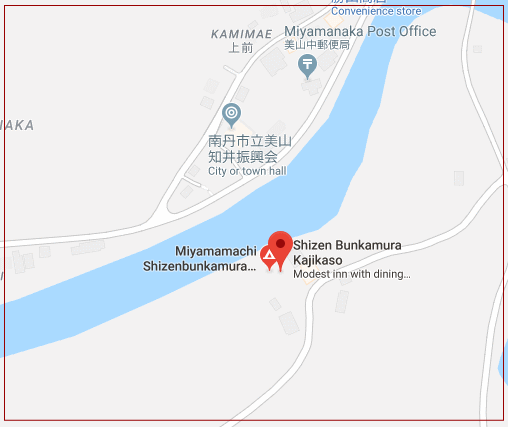A Place Where Time Slowly Flows...
Or it even moves backwards to a long time ago... a Japanese rural village where a farmer would bind an unwilling cow to a plowing tool; a line of bare-foot women wearing Monpe (old Japanese working pants for women) would be advancing in unison planting rice seedlings; children romping around on green fields and mercilessly ripping off Renge sō (milkvetch) petals to taste the flower nectar; an entire family anxiously waiting for their summer fruit chilled in a cold water from the well; or hunting fireflies on the creek sides with a broom and insect cage in hands while singing “Fi-, fi-, fireflies come! The water there is bitter but here it's sweet!”
What age are we in here? Probably not so far away back to the Meiji Period (1868 - 1912) but at least to the era of Showa (1926 - 1989)? Not sure about the exact time, but many Japanese would feel something nostalgic, in one way or another. Old-timers simply remember their childhood where there were no TVs, no air conditioners or even no refrigerators and urban residents with countryside roots would think of their old sweet home, feeling a bit of bitter guilt for leaving it behind. Younger generations might be inspired, or a little sentimental over what they may have missed in their prenatal times.
This is a village called Miyama, a home of Kayabuki (grass-thatched) houses, located in Nantan City, Kyoto Prefecture — less than two hours car ride from Kyoto City. The entire village is a living museum of old rural homes thatched by the plant called Kaya, a kind of Susuki (Miscanthus sinensis). Thirty-eight houses out of around fifty households in the village are roofed with the plant, and the oldest one dates back to the middle of the Edo Period (1603 - 1867).
Kayabuki, Traditional Craftsmanship Rarely Found Today
What’s so special about Kayabuki? First of all, it’s very rare today. Secondly, it’s the unique thatching technique of combining Kaya plants with straws and bamboo sticks into simple but functional roofing. Apparently, long-time experience and expertise are necessary. Third, it’s not something you can get instantly and quickly done but requires months of preparation and meticulous care. Fourth, periodical maintenance every decade is essential to maintaining the roof's condition and functionality. And that’s why an organisation comprising local residents manages the operation. No wonder the village is registered as an Important Group of Traditional Buildings by the Japanese government in line with the cultural property protection law.
Every season stages the distinct beauty of the village. Basked in warm spring sunshine, colourful flowers begin to decorate the fields. With carp streamers swinging in the sky, summer will be on its way, preceded by gorgeous hydrangeas. Then comes the cosmos, buckwheat flowers, the autumn festival, red and yellow tree leaves... Finally, winter arrives... harsh and austere, yet it’s a season of white, purified beauty.
|





 JR
JR 